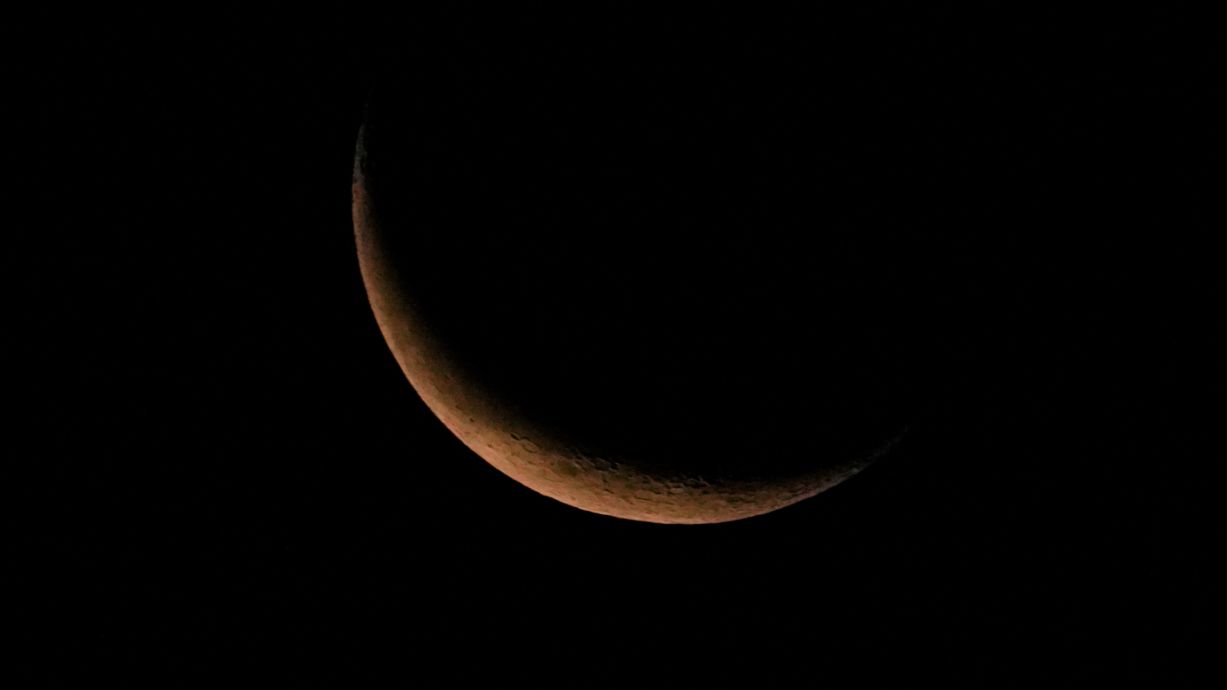Science
Witness a Celestial Triangle: Crescent Moon Joins Jupiter and Venus

On August 20, 2023, early risers can witness a spectacular celestial event as a thin crescent moon aligns with the planets Venus and Jupiter, forming a striking triangle in the pre-dawn sky. The event will unfold shortly before sunrise, offering a magnificent display for stargazers and astronomy enthusiasts alike.
Viewing Conditions and Visibility
The waning crescent moon, illuminated at just 9%, will be visible approximately 15 degrees above the eastern horizon around an hour and a half before sunrise. This event will take place against the backdrop of the constellation Gemini. Observers can expect to see Venus shining brightly as the “morning star,” located roughly 5 degrees to the lower right of the moon. Meanwhile, Jupiter will sit less than 10 degrees to the upper right of the crescent, marking the apex of the celestial triangle.
For those unfamiliar with celestial measurements, the width of a fist held at arm’s length roughly corresponds to 10 degrees in the night sky. Additionally, the prominent stars Castor and Pollux, part of Gemini, will be positioned to the left of the moon during the early morning hours.
In New York, sunrise is expected at 6:11 a.m. ET (10:11 GMT), and observers should be prepared to catch a glimpse of Mercury, which will appear near the horizon. However, this planet will quickly fade from view as the sun rises.
Enhancing the Viewing Experience
For those equipped with a telescope, particularly a 6-inch model, the viewing experience can be significantly enhanced. Under favorable atmospheric conditions, observers can spot the dark oval of the Grimaldi Basin on the lunar surface, along with the cloud bands of Jupiter and the phases of Venus. This opportunity provides a remarkable insight into the dynamics of our solar system.
As the crescent moon continues its journey across the sky in the coming nights, it will transition past Venus and will eventually join Mercury and the Beehive star cluster in the constellation Cancer ahead of its new moon phase, which occurs on August 23, 2023.
For those interested in capturing this rare alignment, it is advisable to prepare equipment ahead of time. A selection of the best telescopes, binoculars, and photography gear suitable for astrophotography can enhance the experience.
In conclusion, this celestial event on August 20 offers a unique opportunity for both seasoned astronomers and casual observers to appreciate the beauty of our night sky. Participants are encouraged to share their photographs of the crescent moon alongside Jupiter and Venus with the broader astronomy community. Interested individuals can submit their images, along with their name and location, to [email protected].
-

 Technology5 months ago
Technology5 months agoDiscover the Top 10 Calorie Counting Apps of 2025
-

 Health2 months ago
Health2 months agoBella Hadid Shares Health Update After Treatment for Lyme Disease
-

 Health3 months ago
Health3 months agoErin Bates Shares Recovery Update Following Sepsis Complications
-

 Technology4 months ago
Technology4 months agoDiscover How to Reverse Image Search Using ChatGPT Effortlessly
-

 Technology1 month ago
Technology1 month agoDiscover 2025’s Top GPUs for Exceptional 4K Gaming Performance
-

 Technology2 months ago
Technology2 months agoElectric Moto Influencer Surronster Arrested in Tijuana
-

 Technology5 months ago
Technology5 months agoMeta Initiates $60B AI Data Center Expansion, Starting in Ohio
-

 Technology5 months ago
Technology5 months agoRecovering a Suspended TikTok Account: A Step-by-Step Guide
-

 Health4 months ago
Health4 months agoTested: Rab Firewall Mountain Jacket Survives Harsh Conditions
-

 Lifestyle5 months ago
Lifestyle5 months agoBelton Family Reunites After Daughter Survives Hill Country Floods
-

 Technology4 months ago
Technology4 months agoHarmonic Launches AI Chatbot App to Transform Mathematical Reasoning
-

 Technology3 months ago
Technology3 months agoUncovering the Top Five Most Challenging Motorcycles to Ride





















